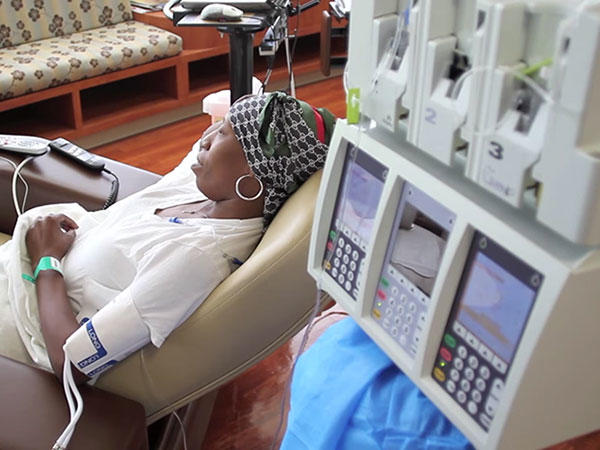
Cancer is a disease when somebody’s cells grow out of control and spread to other body regions. The human body, which has trillions of cells, can be the source of it.
Most cells die when they become aberrant or aged. When something goes wrong during this process, your cells continue to produce new cells while the aberrant ones fail to die as they should, which is how cancer develops.
There are many different types of cancer, including thyroid, breast, endometrial, kidney, liver, lung, and others.
Numerous treatments are available for cancer patients depending on the type of cancer. The two most widely used cancer therapies you might be familiar with are chemotherapy and radiation therapy.
For oncology hospitals today, one of the biggest problems is finding a cure for cancer. Most oncology hospitals in Hyderabad today have developed cutting-edge technology, including CRISPR, artificial intelligence, telemedicine, the Infinium Assay, cryo-electron microscopy, and robotic surgery to treat cancer patients. You can find all these new treatments in any cancer treatment hospital in Hyderabad.
In the fight against cancer, modern technologies also control the immune system, bringing people together. And the technologies have a significant impact on cancer treatment and support the immune system’s ability to recognize and destroy malignancies.
The technologies described below introduce new techniques to treat cancer patients and will soon transform how cancer is treated.
Cell Therapy (Immunotherapy)
By monitoring all components in your body, this therapy helps your immune system function. Certain uncommon types of blood cancer can be treated with this technique because the collected cells do not produce blood, cell therapy differs from stem cell transplantation.
Instead, they might be specific immune system cell types, such as a subset of T cells that can eradicate tumor cells.
Cell therapies for cancer are now being researched using a variety of cell types, such as CAR T cells, other genetically altered T cells, tumor-infiltrating lymphocytes, vaccinations, and NK cells.
Gene Editing (CRISPR)
Gene editing technology is the process of changing the genetic makeup of live cells. It functions like a pair of scissors that can accurately cut, add, or modify certain DNA sequences inside cells.
A cancer treatment using CRISPR-modified immune cells to more effectively find and combat cancer has been discovered through study. The idea of CRISPR was drawn from nature, specifically from a straightforward mechanism present in some bacteria.
To defend themselves from viruses, microorganisms typically seize bits of the invader’s DNA and store them as CRISPR segments. These DNA fragments aid an enzyme called Cas in locating and slicing up the DNA of the invader if the same germ strikes again.
The researchers deduced from this that it had the potential to be a flexible gene-editing tool. Additionally, they could modify practically any portion of DNA in human cells using this approach. Two essential components comprise the CRISPR tool: a guide RNA and the Cas9 DNA-cutting enzyme.
Microbiome Treatments
According to researchers, immunosurveillance can weaken, and immunological tolerance to tumor-derived antigens can lead to cancer. The host immune response to malignancies can be modified by the gut microbiota. It also serves as a biomarker to determine how well cancer treatments work.
Immune checkpoint inhibitors (ICI) are frequently employed in the treatment of advanced-stage cancer. They are regarded as a revolution in cancer therapy that will improve the dismal prognosis of many malignancies. Both clinical cohorts and experimental mice models recently revealed that the gut microbiome significantly influenced tumor response to ICI.
Personalized Vaccines
By enhancing the body’s natural defenses against cancer, vaccines function as immunotherapy treatments for the disease. These vaccines are effective against cancer cells and can be given to cancer patients.
Tumor-associated antigens are thought to be present only in cancer cells and, absent or located in lower cells in normal cells, are considered present in cancer cells. With this therapy, the immune system can be taught to detect these antigens, respond to them, and eliminate cancer cells that harbor them.
With the development of these new technologies, cancer is becoming a more treatable condition. Based on the patient’s DNA profile, treatments will likely become considerably more individualized in the future.